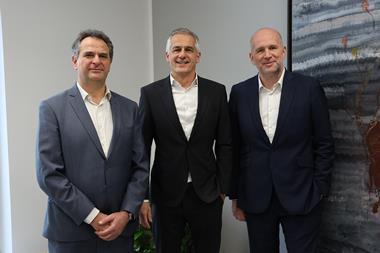Measuring the success of private equity is one of the tougher tasks within fund management. Transactions span long tenors, with funds frequently enduring for over a decade from launch to the return of capital, and given the unlisted nature of investments, an investor is never quite sure exactly how well his bet has turned out in percentage terms until the deal is ultimately crystallised.
The Asian private equity landscape is constituted by just over half growth/venture capital funds, a quarter buy-out funds, and the remainder split between secondaries, mezzanine, co-investments and funds of private equity funds.
Of the private equity funds that have launched successfully in recent years, it has been a long fight back from 2008, when 125 funds were off to the races, raising $511bn.
In fact, it hasn’t really been much of a fightback, and after an upward trend from 2009 to 2011, the amounts being raised have stagnated. In 2012, the number of new funds closing globally halved from 152 to 88, and in Asia, the amounts raised fell back from $43.4bn to $32.1bn, according to PEI Analytics.
After the 2008 financial crisis, many alternative investors felt a need to maintain liquidity, having been burnt by ostensibly liquid distressed debt funds which subsequently found it difficult to meet redemption requests from illiquid assets. Private equity investment seemed to sail through unscathed in comparison, but then again, perhaps that was more due to investors’ stoic recognition that their money was locked up anyway for years to come.
“There’s a risk premium in Asia,” says Jim Hildebrandt the managing director of Bain Capital Asia. “People see fraud, exchange risks, country risks, offsetting those are growth prospects and the fact that Europe and USA have their own risks.”
Private equity is ‘active’ not simply by virtue of its ability to exit deals profitable, what keeps it vital is when funds are able to go out and raise new money for second and third and subsequent funds. According to PEI Analytics, this year in Asia, 471 funds are seeking to raise $250bn, extrapolated globally, 1596 funds are looking for a target of $815bn. It looks like a tall order.
China – is the gilt coming off?
According to statistics from Zero2IPO, in 2012 in China, private equity capital raisings fell by 70%,
“Domestic funds have been able to raise in US Dollars and RMB,” says Conrad Tsang, MD of Baring Private Equity, with $5bn under management, 50% in China, 25% in India and 25% in Southeast Asia. “Foreign funds have been able to raise RMB. There’s a big pool of RMB capital coming available.”
Investments in China were down by 50% in 2012, as the private equity market has slowed down.
“There are 3000 local GPs in China. Only about 100 are active. For the most part the rest are inactive,” says Hui Sheng Yang, MD of Tiantu Capital, which operates five RMB funds, managing RMB5bn ($812.3m), focused on consumer related businesses, healthcare. “It’s not easy to make money, but some of the specialised funds in clean-tech and IT are doing well. Specialisation will be a greater trend.”
He adds Tiantu has invested in 30 consumer companies since 2008. What does it imply then if a Chinese private equity firm is not regarded as ‘active’?
“I consider it means that they don’t take external money,” says Lewis Wan, Chairman and CIO of Hong Kong-based private equity firm, The Pride Group. “They are private equity funds comprising of the family and friends money of an entrepreneur who wants to invest in new businesses.”
So, what then are the attributes of a Chinese private equity fund that is active and wants to be able to stay competitive and raise new funds?
“To have an onshore Chinese fund gives a competitive advantage over US Dollars. We started to see Chinese investors going offshore with RMB in late 2012 and that is a trend to watch through 2013,” says Tinchuck Ng, founder and managing principal of Athena International Capital. “There will be more institutional quality funds. The next wave of successful GPs in china will be those who can give an institutional quality service.”
To date, while international investors in China often profess a verbal interest in the China story, this has not translated into actual investment. So far, Chinese private equity is played domestically.
“We’ve seen the RMB market have an effect on the US Dollar private equity market in China,” says Chris Hunter, MD of Cambridge Associates Investment Consultancy in Beijing. “We think the RMB market will be more investable in the near term, as holding periods increase, and the GPs develop their skills in influencing management in their investees, beyond just handing them the money.”
In China there are now a greater proportion of earlier stage investors. Formerly there was a concentration on late stage investors arbitraging the putative IPO price. There are a lot of managers who made money on pre-IPO deals, a market which has now gone, probably for some time.
“It’s hard to deploy and repatriate money from China, if the screws were loosened, it would help private equity,” says George Raffini, Chairman of Headland Capital Partners. “There’s a long listing queue in China, and holding periods there may extend on average beyond five years.”
Zero2IPO also calculates that exits from private equity deals in China reduced by 30%-40% last year. Dayi Sun, MD of China fund of funds Jade Invest expects hundreds of IPO candidates to be withdrawn as the IPO listing process continues to be suspended, meaning that successful GPs will have to refine their abilities to undertake trade sales. “In China our exits are 70%-80% IPO and next is redemptions by entrepreneurs.
“For example, one company didn’t fit with IPO listing so the entrepreneur sold a factory and repaid investors. Now you see more strategic sales in value chains. Sometimes they are linked to second generation issues.”
However, in China, the legal environment is not that good for mergers and acquisitions. CSRC approval is needed for listed companies, and for foreign acquirers, whilst they can buy Chinese companies, they risk being turned down if the Ministry of Commerce does not agree to a brand passing into foreign ownership. That happened with both Coca Cola’s attempt to buy Huiyun Juice and Carlyle’s purchase of Xugong machinery.












No comments yet